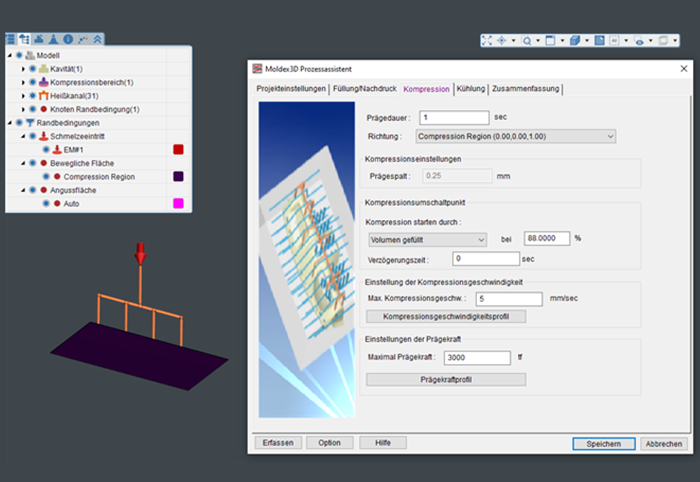
Determine process parameters for injection compression molding
ESPECIALLY FOR OUR USERS
Do you want to take advantage of the benefits of injection compression molding, such as a more uniform packing pressure effect to produce your component with less residual stresses and better optical properties? Now you are faced with the challenge of determining suitable parameters for your injection-compression molding process? Find out how Moldex3D can assist you for this purpose …
In conventional injection molding, the holding pressure is introduced into the part via the gate. This results in a high packing pressure in the area close to the gate, while only a significantly lower packing pressure is achieved in areas further away from the gate. In extreme cases, the part may be overpacked close to the gate, but only a very low holding pressure level is achieved away from the gate. The different pressure states increase the risk of warpage, sink marks and residual stresses.
For components with high quality requirements, injection compression molding can be a suitable alternatively to conventional injection molding. Injection compression molding (ICM) is a combination of injection molding and compression. After injection, the plastic is not compressed locally over the injection point by the melt, but over the entire surface, e.g. by moving mold cores. Due to a more uniform packing, components with better dimensional stability and lower residual stresses can be produced to meet high quality requirements. The challenge with injection-compression molding is the more complex process control, since plausible parameters must be determined for both injection and compression. Moldex3D can support you with this issue. The preparation of the simulation is similar to conventional injection molding. In addition, the definition of the compression area and the compression stroke as well as the process parameters for the compression process are required. After the calculation, among other things, the melt movement through the injection and compression can be evaluated as an animation and thus the set process conditions can be checked for plausibility. In the blink of an eye, these can then be adjusted in the settings and further calculations carried out until the optimum combination of injection and compression parameters has been determined.
